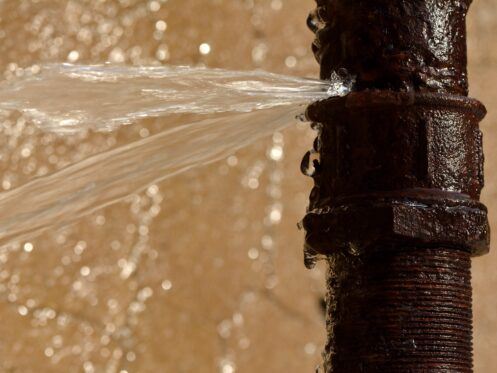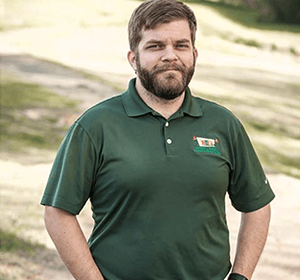Dampness from water leaks can weaken structures by causing rot, stains, and deterioration of materials like wood and drywall. Mold and mildew, which thrive in moist environments, can worsen respiratory issues and pose health risks. Additionally, water leaks can damage belongings and furniture, resulting in huge financial losses. No matter the cause of a leak, the best thing to do is contact a plumber right away. Homeowners can also take certain preventative actions to get rid of water leaks in their Louisiana homes.
1. Replace Worn-Out Washers and Gaskets
Washers and gaskets in faucets in plumbing wear down over time due to mineral buildup and exposure to water. And the more you use them, the faster they wear. As they age, they lose their ability to seal tightly, increasing the risk of leaks and water damage to your home. To prevent this, it’s important to replace washers and gaskets as soon as they wear out. Regular inspections and maintenance help spot these issues early, allowing for timely repairs and protecting your home from potential water disasters.
2. Seal Pipe Threads
As time passes, connections between pipes and fixtures develop leaks due to wear and rust. An improper setup can make the rust and leaks much worse. Applying thread sealant or plumber’s tape to these threads helps form a tight seal. Important places to seal include pipe joints, fittings, and fixtures like showerheads and faucets. To keep the system intact, it is crucial to inspect and maintain threaded connections regularly.
3. Use Leak Detection Devices
There are a variety of leak-detecting technologies available to homeowners. These include water sensors, automated leak detectors, and smart water monitoring systems. Water sensors simply sound an alert when they detect high levels of moisture. Automated leak detectors identify leaks and shut off the water supply automatically. Sophisticated water monitoring systems offer features like real-time alerts and remote control via smartphone apps. When choosing a leak detection device, consider factors such as your home’s size, desired level of automation, compatibility, ease of setup, and budget.
4. Repair or Replace Damaged Pipes
If left unchecked, leaks from damaged pipes can lead to structural issues and mold growth. The extent of damage and the piping material dictate the best approach for repair, which may include patching, relining, or a complete replacement. It’s advisable to hire a professional plumber for this task to ensure the plumbing system’s integrity and prevent further leaks. Licensed plumbers possess the necessary expertise and tools for safe and efficient repairs. Homeowners can keep an eye out for leaky pipes by knowing the warning signs: water stains on ceilings or walls, low water pressure, sudden increases in water bills, mold growth, or musty odors.
5. Monitor Water Pressure
Homeowners have several options for monitoring water pressure and preventing leaks. Pressure gauges connected to the main water supply line can provide updates on pressure changes. Smart water pressure monitoring systems offer remote monitoring via smartphone apps for proactive leak detection. Flow meters track water flow rates, identifying irregularities that may signal leaks. By doing pressure checks on a regular basis, homeowners can catch problems early and have a plumber fix them immediately, saving money in the long run. More importantly, this protects the home against water damage and its frustrating inconveniences.
6. Protect Exposed Pipes With Pipe Sleeves
Some pipes in a home remain exposed to various elements, such as temperature fluctuations, physical impact, and rust. These pipes are what plumbers refer to as exposed pipes. Over time, the harsh elements that these pipes come into contact with can cause damage and leaks. Fortunately, there are several ways to protect exposed pipes, with pipe sleeves being one of the most highly preferred. Pipe sleeves come in different materials, like rubber, fiberglass, and foam. A plumber will consider factors such as the pipe material, insulation properties, and durability when choosing which type of sleeve to install.
7. Fix Leaky Toilets
Signs of a leaking toilet include higher water bills, water stains near the base and the toilet constantly running. If left unaddressed, a leaky toilet will lead to mold and water damage. Repair options depend on the source of the problem. Most leaky toilets require fixing the fill valve, adjusting the float valve, or replacing the flapper valve. Hiring a plumber ensures proper repairs, prevents further damage, and saves water and money in the long run.
8. Keep Up With Water Heater Maintenance
Water heaters accumulate rust and sediment buildup due to minerals and impurities in the water that settle at the bottom of the tank. This rust and sediment buildup corrodes the water heater, weakening its structure. As time goes by, this deterioration can lead to cracks or holes in the tank, causing leaks to occur. Regular maintenance tasks like flushing the tank, inspecting for rust, and replacing worn-out parts will help prevent leaks.
9. Check Attic and Crawl Spaces for Leaks
Water leaks in attics and crawl spaces are easy to overlook because they are typically hidden from view, and homeowners may not frequently inspect these areas. As a result, leaks can go unnoticed for extended periods of time, leading to significant damage and costly repairs. This is why it’s so important to inspect these areas at least once a month. When performing the inspections, homeowners should look out for water stains or puddles, which indicate moisture. Mold or mildew growth can also signal a hidden leak. It’s also wise to invest in regular roof inspections since they play a vital role in protecting attic spaces from water leaks.
10. Ensure Proper Drainage Around the Foundation
Poor drainage around a home’s foundation can cause water to accumulate, leading to problems like soil erosion, foundation cracks, and basement flooding. This pooling of water is usually a result of inadequate drainage systems. To fix the problem, homeowners should regularly clean their gutters and downspouts to ensure water flows away from the foundation. Installing dry wells or French drains may also be necessary to further protect the foundation and prevent water damage. Additionally, grading the soil around the foundation away from the house can improve drainage.
11. Check Outdoor Faucets
Outdoor faucets are common culprits for water leaks. Leaks can occur due to various reasons, such as corrosion, damage to the faucet or its fittings, loose or improperly fastened hoses, or freezing temperatures. To stay on top of maintenance for outdoor faucets, homeowners should perform regular inspections, checking for signs of corrosion, damage, or leaks around the faucet and its connections. Replacing corroded or damaged faucets is essential to protecting the home against leaks. During colder months, it’s important to turn off outdoor faucets to prevent freezing and potential leaks.
Water leaks affect every aspect of your home, including its plumbing, heating, and cooling systems. Bobby L Greene Plumbing, Heating & Cooling Co. wants to help you stop leaks before they cause damage. We offer plumbing, drain and sewer, water heater, and HVAC services. Contact us now to schedule leak detection and repair in Shreveport, LA.

